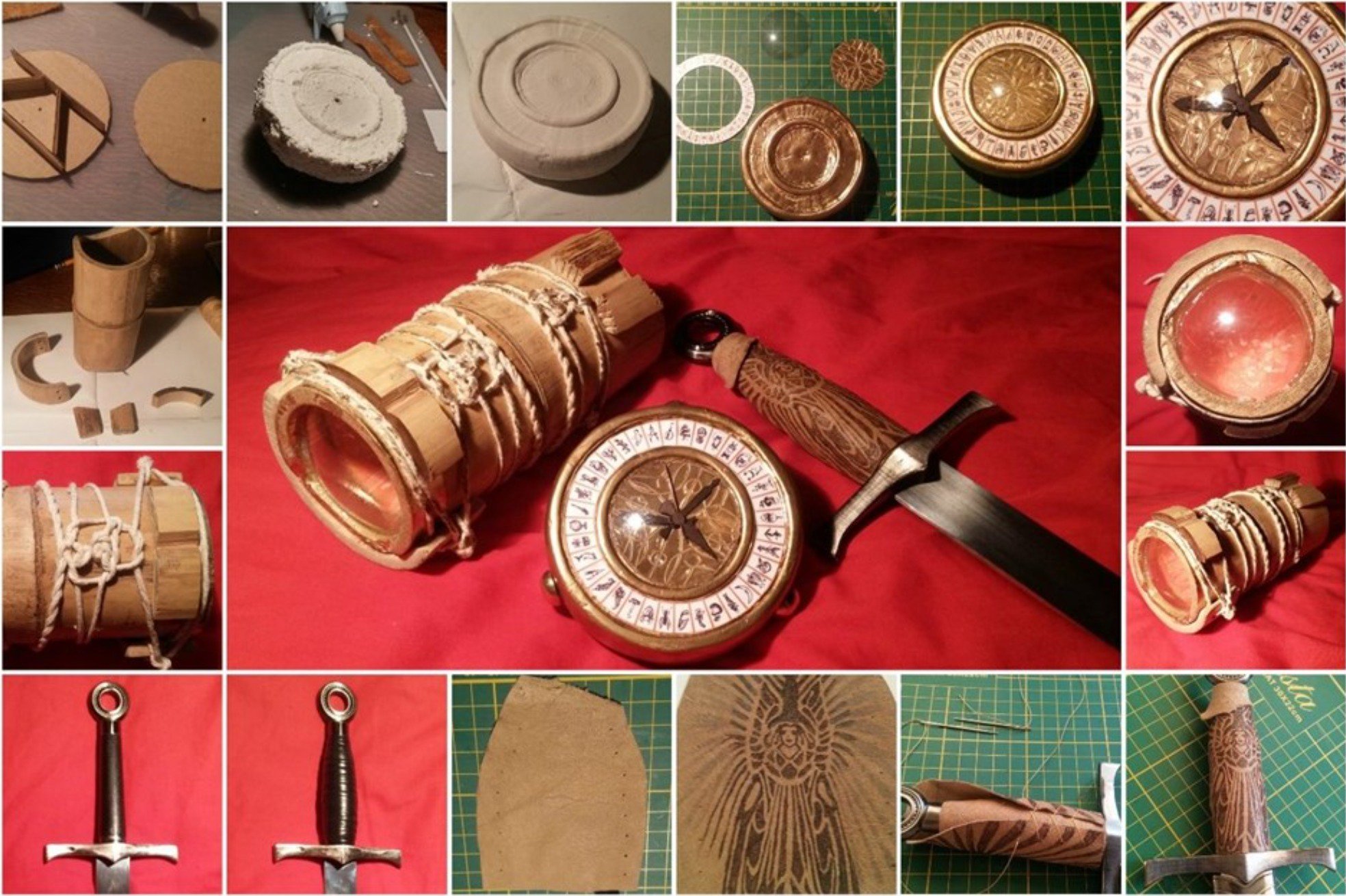Louise Banks explains the key props she made for His Dark Materials.
With the rise of eBay and online shopping the world of props sourcing has been turned on its head and what used to take weeks of visiting every charity shop you could find and calling in favours now takes a few minutes and a search engine. The art of prop making however has not changed much and is still alive and well because while many props are easily available inevitably there comes a show with that unique item that can't be bought. This show has three.
For this production, the three principle props have a stronger hold than many due not only to their importance to the play but also their prominence on the book covers of the His Dark Materials trilogy. Every reader of these books has a unique knowledge of the look of these props. The prospect of making something so precious to people is thrilling but the fear of getting it wrong is also intense. For example, the spyglass is described as a short piece of bamboo in the novel but the cover depicts a more traditional spyglass structure. It is important to strike a balance between what it should be and what the audience expect to see.
Props makers are often referred to as jack of all trades, master of whatever-is-needed-now. You find that in order to create props you need at least some skill in many different arts from woodworking and metalworking to sketching and painting. Even calligraphy and embroidery get called upon and you need to be flexible enough to roll with it, to turn your hand to whatever might be required of you.
For The Three Musketeers it was jewellery creation; for Suddenly Last Summer it was book covering; and for Dracula it was leatherwork embroidery. For this production, the Alethiometer was constructed with the help of some excellent online instructions and templates by using a profiler and filler over a cardboard base, and after many layers and much sanding a coat of spray paint gave it the gold finish. The engraved centre was produced simply by scoring an oversprayed circle of photo-paper. After that the dias markings, hands and dials were added. The bamboo spyglass was made as ex-pected by trimming and assembling bamboo pieces using string and a variety of knots to create the iconic knot-ted look from the cover. The inside was painted to show the amber and white speckled view as seen on the book cover. For the knife, extra padding was added to the hilt to make it the right size and the goddess design from the book cover was sketched and painted onto light leather and this was used to bind the hilt.
Louise Banks

